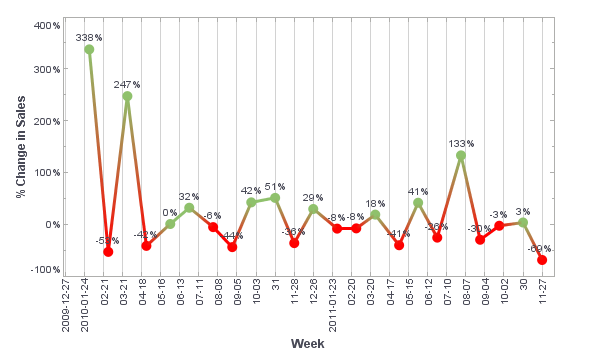After reading Information Management’s article entitled, “BI Metrics Interesting, But Not Strategic” I thought I would seize on one major talking point in order to discuss how our enterprise BI solutions actually differ from the traditional BI these analysts seem to be basing their arguments on.
According to research that was recently published by the Gartner group, more than 70 percent of BI initiatives over the next four years will fail to synchronize analytics with enterprise objectives. Gartner research VP Andreas Bitterer notes: “Short-sighted development of analytics for BI will leave many enterprises without ‘the right data … presented to the right people and processes at the right time.’”
Bitterer is correct in the notion that many BI efforts are unable to provide ‘the right data to the right people at the right time’. I think the reason is that many solutions simply aren’t geared toward rapid development. Additionally, most solutions allow no more than a handful of specialists to handle data and asset creation. As a result, the workload gets placed squarely on the shoulders of overburdened IT departments, and business users aren’t able to obtain information when they need it.
Our solutions are a counterbalance for this age old problem by allowing end users to define data sources and design reports and dashboards through a rapid development, web-based environment. To be fair, heavy involvement from IT will still be required at least initially. IT will need to define data sources and create a user-friendly logical model, in order to remove the underlying complexity.
However, once these sources are created, business users have the ability to instantly integrate them into dashboards and reports that they themselves create from within a browser. And while many traditional BI solutions rely on scripting, our enterprise BI tools feature simple drag and drop mechanics and data wizards to allow less technical users to develop their own assets.
On the data end, existing sources can be joined to new data sources in a user friendly data layer called a ‘worksheet’ in order to accommodate new and temporary needs. Again, these data sources can be used by business users to create their own assets. This is much faster than relying on the traditional model of ETL and data warehousing.
With traditional BI, it’s easy to see why the hype may fall short of reality when the metrics presented fail to connect to business objectives in a timely manner. At InetSoft, our business intelligence platform brings real-time data that you’re able to synchronize to your business strategy by way of rapid development, quick design, and self-service.


